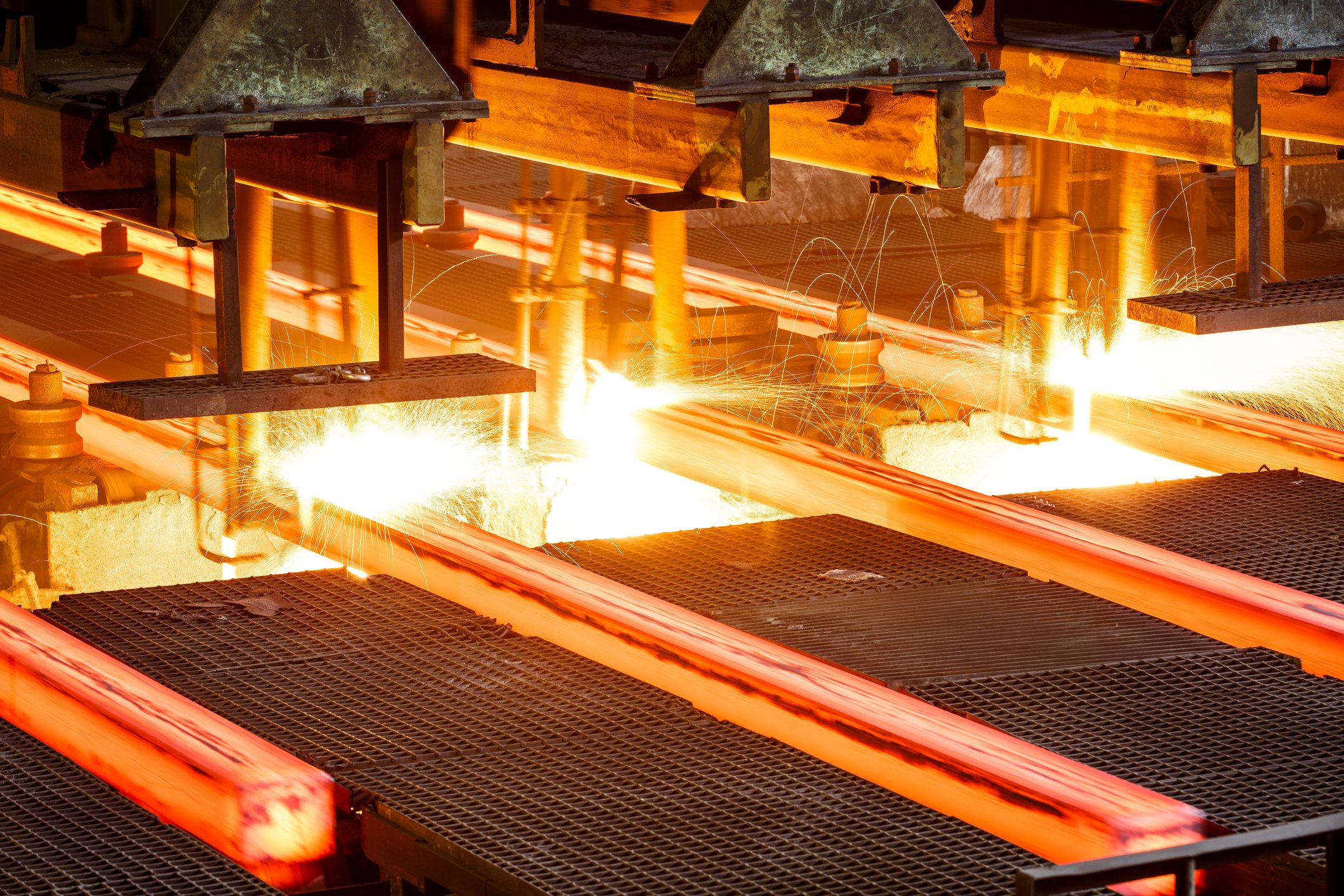
What is Steel?
Steel is a metal composed of iron plus varying amounts of carbon as well as other elements such as chromium, nickel, molybdenum, zirconium, vanadium, tungsten, and so on. Different types of steel - that is, steel with different properties and characteristics - are produced by adjusting the chemical composition and adapting any of the different stages of the steelmaking process, such as rolling, finishing and heat treatment. As each of these factors can be modified, there is potentially virtually no limit to the number of different steels that can be made. Currently there are over 3,000 catalogued grades available (chemical compositions) of steel, not counting those created to meet custom demand, ranging from basic grades (such as for railway tracks) to sophisticated high-alloy and stainless grades for specialized applications.
Products
Steel slabs, billets and blooms are known as semi-finished products. Finished products include: hot- or cold-rolled flat products (such as plates, coils or sheets) and hot-rolled long products (such as wire, bars, rails or beams.
Application
Steel is used in a vast array of products. The largest markets for steel are construction (buildings, transport infrastructure, etc.), automotive and packaging. Electronic components, industrial equipment and medical applications are also important markets, particularly for special steels and stainless steels.
Production
The steel industry worldwide produces over 750 million tons of crude steel each year (based on average annual production in the past decade). The largest steel-producing countries are PR China, Japan and the United States, which each produce around 100 million tons of this total. Russia, FR Germany and Rep. of Korea each produce around 40-50 million tons.
Consumption
Steel use in any country is closely linked to its economy, with the largest consumption in the wealthiest countries of the world. Steel consumption of finished steel products ranges from approximately 20 kilograms per person per year in Africa to around 340 kg in Europe, 420 kg in the North America and 635 kg in Japan. However, the largest consumers are in Asia: Singapore (1,200 kg/capita), Taiwan ROC (over 970 kg) and Rep. of Korea (830 kg).
Per capita consumption is climbing rapidly in Asia due to investments in industry, transport infrastructure, construction and overall improved standards of living: for example, in the past decade, per capita consumption has risen by nearly 470 percent in Malaysia, 240 percent in the Republic of Korea, and nearly 80 percent in PR China. (More steel statistics)
Recycled steel (scrap)
is a required and essential component of new steel, making steel a naturally environmentally responsible material. In basic oxygen steelmaking, scrap represents up to 30 percent of the raw materials charged into the furnace. It represents between 90 and 100 percent of the charge in EAF (electric arc furnace) production.
Steel is 100 percent recyclable: moreover, it can be used over and over again with no downgrading to a lower quality product. Steel's magnetic properties make it simple to extract from other materials for recycling. Approximately 350 million tons of steel scrap are recycled each year.
Stainless steel is a very valuable commodity and is therefore almost entirely recycled.
Employment
Steel production in the world has risen by approximately 30 percent in the past 25 years. In the same period, estimated employment in the major steel-producing countries (excluding PR China) has fallen from around 2.5 million to 1.3 million people. This enormous reduction has been the result of major investments by the world's steelmakers in modern steelmaking processes and technologies. The new technologies not only improve productivity but also increase yield efficiency while reducing resource consumption and the environmental impact of the steelmaking process.
A modern material in a competitive market
While the manufacturing materials available to man changed little for hundreds of years, the latter half of the 20th century has seen a tremendous influx of new and exciting materials. The world of steel is no exception.
Steel is not a single material, but a vast range of different materials constantly evolving as steel applications evolve. For example, more than 80 percent of the steels used in automobile production today did not exist ten years ago. In automotive as in other applications, steelmakers are continually working in collaboration with their customers, improving and modifying their products, and creating innovative new steels.
World of Steel

